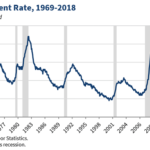Reducing Your Stress NOW
When I was 36, I was diagnosed with clinical depression and told by my doctor that I had been living with it for over 30 years.
Being a stoic and hardy New Englander, I was determined to figure out how to move out of depression as quickly as possible. Many of the lessons I learned along that path are applicable to quickly getting out of stress:
1. Ask yourself, “Is everything okay right this minute?” If the answer is yes, then you are likely engaged in forecasting the future or, as it’s more commonly known, worrying.
a. ACTION ITEM: Turn your focus from hat could go wrong to what’s going right and your shoulders will

2. Your brain does not know the difference between pretend and reality.
a. ACTION ITEM: Spend the rest of your day (even when alone) smiling. Your brain will get the message that you’re in a good mood and flood your system with some yummy chemicals.
3. I’m certain that, if asked, you could quickly come up with a list of 10 things you dislike about the current situation that’s causing you stress. Let’s reverse that.
a. ACTION ITEM: Make a list of 10 things that are (or could be) good about the situation.
What I learned from battling depression is that I have a mind that, left to its own devices, will harm me. Therefore, I have to be proactive about feeding it thoughts that help instead of hurt. I learned that I have a choice about what I can focus on but IT TAKES PRACTICE.
Using the tool of focus, I have turned around my natural tendency to look at what’s wrong and have re-trained myself to look at what’s right. Am I perfect at it? I wish! But think about this: what if you could shift the percentage of time you’re focused on things that make you feel bad? Instead of, say 85% of the time you reduced it to 75%? Then 70%? Then 65%? That’s what I did and I can honestly say that today (after over two decades of practice), I focus on the negative only 5-10% of the time. Would that be worth it?
You have a choice. Start today to focus on what makes you smile versus what makes you stressed and you will be blown away by the difference in your life—both at work and at home.
Change Your Focus; Change Your Life!
To schedule a FREE 20-minute phone consultation about how you can make your work environment less stressful, call 480-560-9452 or email Silver@SilverSpeaks.com
4% Unemployment Makes Employee Engagement CRUCIAL
I believe we have the capability to innovate our way out of anything. The problem is, we generally don’t act until there is a crisis. When unemployment was in double figures, there was no compelling reason to pay attention to the importance of engaging employees. After all, where were they going to go? It was tough “out there” and they were unlikely to walk out the door.
Even if you’re a kind soul who truly cares about your team, there’s still a good chance you have not been giving enough attention to engaging your employees. You’re busy; you have a lot to do.
 Consider this your wake-up call. Your employees now have many options, especially your top performers. Unemployment is at 4%. Take your team for granted at your peril. There IS a crisis; time to innovate.
Consider this your wake-up call. Your employees now have many options, especially your top performers. Unemployment is at 4%. Take your team for granted at your peril. There IS a crisis; time to innovate.
At a time of year when most organizations are looking at budgets, an equally important task is to look just as closely at your employee engagement. There are numerous ways to measure it: use of employee benefits, mistakes made, customer accolades versus complaints, productivity, etc. My guess, however, is that you already know whether your employees are engaged. You can tell by the energy (or lack thereof) at your work place.
If there is one thing you can do this year to ensure growth and/or increased productivity, it is to focus on ways to engage your team more fully. Unfortunately, this is often not even on most leaders’ radar. It’s too easy to decide that it’s hopeless– people will be people – I can’t do anything about whether or not they are engaged.
How do you know? Have you even tried?
First of all, you get more of what you focus on. The moment you shift your focus from, “What’s the use?” to “Let’s see what we can make happen,” you will begin to see an uptick in engagement. Add to that some simple approaches:
- Before going straight to your work area at the beginning of your day, make an effort to greet everyone on your team. If they respond with a puzzled look and ask, “Who are you again?” you know it’s a bigger problem than you feared.
- “Catch” people doing something right.
- Say “thank you” and be specific about what you’re thanking them for.
- Write them up for doing something well versus writing them up for mistakes.
These are just a few ways to engage your employees, there are many more. Those listed above don’t take a lot of time; they do take focus.
Why not try them out? Be innovative! What have you got to lose?
“There is a principle which is a bar against all information, which is proof against all arguments, and which cannot fail to keep a man in everlasting ignorance—that principle is contempt prior to investigation.” – Herbert Spencer
Or, as the old TV slogan encouraged us, “Try it; you’ll LIKE it!”
More reasons to master the fine art of silence

For years I have been promoting the power of silence. If you’ve heard me speak on the topic of How to Get Others to WILLINGLY Do What Needs to be Done, then you are familiar with the following guidance: “Once you ask a question, STOP TALKING!!!”
I came across this article that gives you even more reasons to master the art of silence.
The Subtle Power of Uncomfortable Silences
Please enjoy!
Humility & Leadership – Oxymorons?
“Humility is even more pleasing in people in whom arrogance would be understandable.”
― Mokokoma Mokhonoana
Two interesting pieces of information came across my computer screen today:
- Happiness at work may hinge on how you see your boss. At first I thought, “Well, d-uh!” but then I read the article more closely. According to a paper published by the National Bureau of Economic Research, employees who think of their supervisors as partners report significantly higher levels of happiness than those who think of their managers as bosses.
- Humility, as a desirable trait, is making a comeback! Some companies are even using it as part of their criteria for hiring, according to a report in The Wall Street Journal. Additionally, three recent studies revealed that leaders who are considered humble “inspire close teamwork, rapid learning, and high performance in their teams.” Employees who display this trait have been found to be less likely to be absent from work, or quit. Unfortunately, they are also less likely to call attention to themselves, which means that their positive qualities might go unnoticed.

According to the Merriam-Webster dictionary, humility is defined as follows: freedom from pride or arrogance.
It would be difficult to view an arrogant boss as a partner. We’re more likely to view him/her as someone to fear, or steer clear of. Neither encourages happiness or teamwork.
On the other hand, someone who is free from pride or arrogance is often what we term “approachable” or easy to be around. Each of us carries within us a desire to feel like our boss likes us and is “one of us;” that can only be fulfilled by someone who is humble.
Here are a few clues that your team sees you as someone to fear:
- You discover most errors; your team does not bring them to your attention
- Customer service problems are brought to you by customer complaints instead of proactively from your team
- Workplace energy is low when you’re around
- Team members avoid eye contact OR make eye contact in a belligerent or rebellious way
- You can just tell; you can’t put your finger on it but you know you make them uncomfortable.
If you’re interested in improving your likability, the best book I know is How to Win Friends and Influence People by Dale Carnegie.
If you’re not interested, consider this: A study conducted by economic researchers at the University of Warwick discovered happiness resulted in a 12% increase in productivity. On the other hand, unhappy workers were 10% less productive.
Besides, not wanting to improve your likebility is pretty arrogant, don’t you think?
Questions to Improve Productivity

We are addicted to knowledge—to having the “right” answers. Things would improve quickly if we became addicted to discovery.
When is the last time you took a look at how things are done in your work environment with an eye toward improvement?
How often do you ask one or more of these questions about the processes in your line of work?
- How could we improve this process?
- Is there affordable technology that could improve the end result?
- How could we make it faster?
- Are there people involved in this process who don’t need to be?
- Where are the bottlenecks and how can we eliminate them?
- What takes the most time when completing this process?
- Does the customer (internal or external) even want this anymore? Is this the format s/he wants?
- What’s the lowest pay grade it makes sense to assign this to? (This could free up your senior talent to do other things and give your less experienced team members an opportunity to grow).
After facilitating hundreds of these types of discussions for both private and public organizations, I can say unequivocally that the quickest way to identify areas for improvement is to ask your team. Give them an opportunity to identify and submit those processes they believe could be improved, their ideas for improvement. Turn their complaints into solutions. Challenge them to say how they would do it if they were put in charge. They’re discussing this when you’re not around; it’s time you heard their ideas.
If ideas are submitted that cannot be implemented, let them know why. They may not agree but they’ll be glad you let them in on the decision making process. It could also prompt them to come up with an even better solution.
This discovery process also has the advantage of teaching them how to apply the same questions to their individual work, which in turn, leads to personal improvement and greater productivity.
A “one man band” is, by definition, not a leader, so stop thinking you’re the one who needs to have all the answers. You have players in your particular band who want to help make it the best band ever (U2? Heart? The Boston Pops?). Work with them to adopt an attitude of discovery and watch employee engagement increase.
Change your focus; engage your team!
